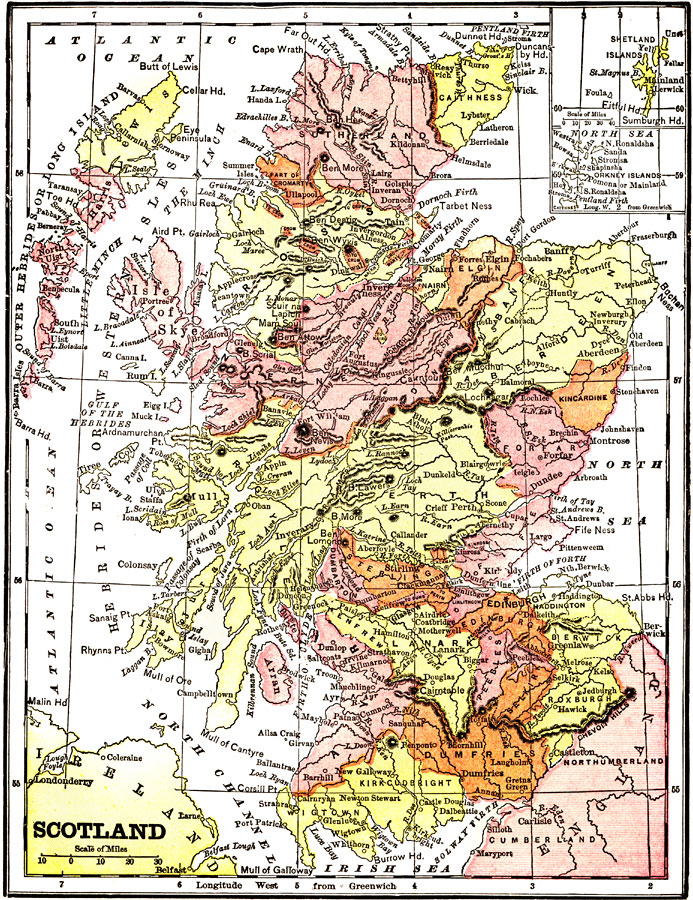Description: "Scotland — Previous to the union with England, Scotland as an independent country, had attracted considerable attention. In the middle of the ninth century the Scots acquired predominance in North Britain by revolution. A lineal descendant of Ardan, a powerful prince who more than once successfully invaded the English borders, named Kenneth, claimed the British realm. Under his son, Malcolm II., the Scotch acquired the Merse and Teviotdale from the Earl of Northumbria. Malcolm III., who succeeded, had a long and prosperous reign, in which Scotland made great strides forward, both politically and socially. English customs were introduced, owing to his long residence in England and his marriage with an English princess, and the English language began to make headway on account of the large immigration from England which took place. During the succeeding reigns of Edgar, Alexander I., and David, who was a great reformer in both clerical and secular affairs, the English influence increased. One of the ablest and best Scottish kings was Alexander III., who, by a treaty with Norway, added the Isle of Man to his dominions, together with other islands of the Western Sea. A dispute over the crown followed the death of his granddaughter in 1290, and the decision between the claimants, Baliol and Bruce, was left to King Edward I. of England, who entered the country with an army, deposed Baliol and instituted English government. A prolonged struggle for independence followed, in which the heroic deeds of Wallace and Bruce gained for the Scotch a deathless reputation for valor and patriotism. During succeeding generations the history of Scotland was one prolonged story of interminable civil and border warfare, and of occasional invasions from England." &mdash Wark 1904
Place Names: United Kingdom, Mull, �Dumfries, �Edinburgh, �Fort William, �Perth, �Sutherland, �Glasgow, �Forfar, �Inverary, �Fort Augustus,
ISO Topic Categories: society
Keywords: Scotland, physical, �political, physical features,
topographical, country borders,
major political subdivisions, society, Unknown, 1904
Source: Henry Wark, ed. , Wark's Modern Educator (New York, NY: Henry Wark, 1904) 910
Map Credit: Courtesy the private collection of Roy Winkelman |
|
